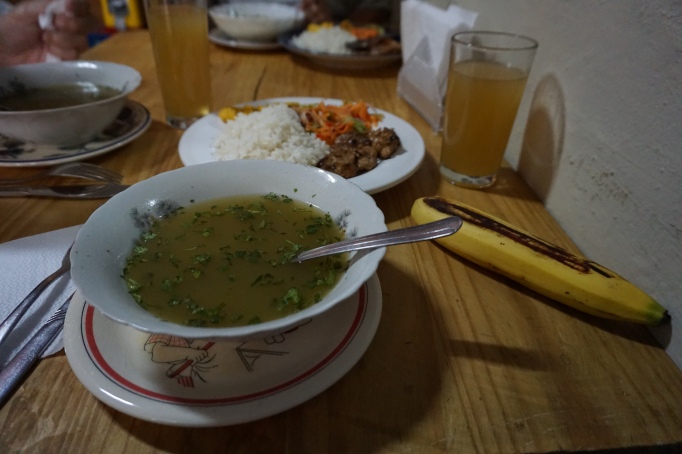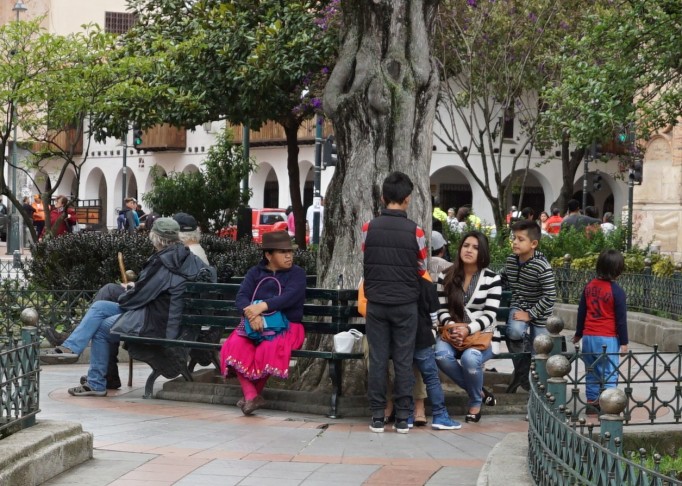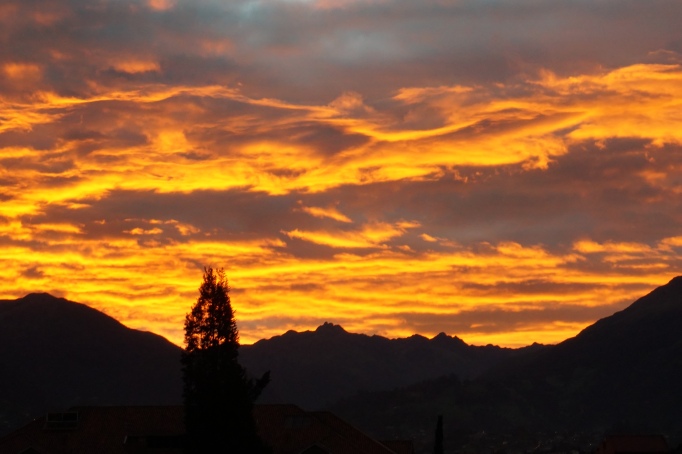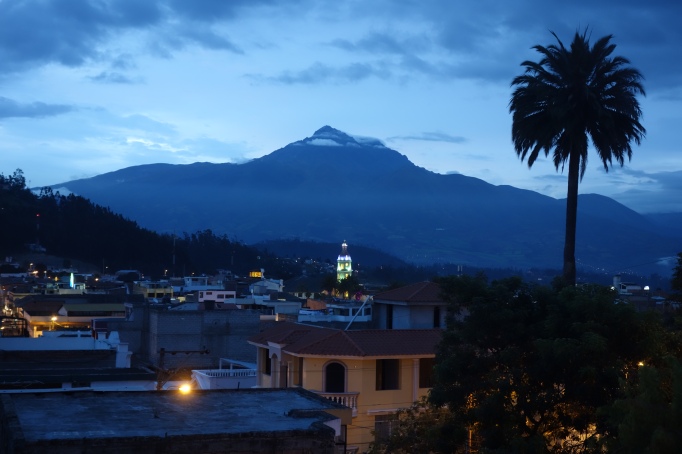
So I haven´t written anything here all month. Peru and the death of my computer are my excuses. But now I want to go back and catch up. I’m currently in another small town that is quite tempting to a lot of retirees, dropouts, new age practitioners, ayahuasca and San Pedro enthusiasts, fake and real shaman, and snake oil sales people. In other words, the southern Peruvian version of Vilcabamba. So it put me to mind to get to work on my blog.
Vilcabamba has a reputation. It is also a bit of a mystery to me. The reputation is as a valley of longevity where you can retire on thin air and live forever. It also has a reputation as a place to take “plant medicines” aka ayahuasca and San Pedro. Hence its attraction to the above list of motley characters. The mystery is how this place has developed in a little rather hard to get to valley in the south of Ecuador on a barely used/usable stretch of road that leads to the least used jungle border crossing to Peru. To the north by an hour or so is the town of Loja, but that is far from an outpost of urbanity. If you are looking for a city, it is a 4.5 hour flight to Quito. It is in the middle of pretty much nowhere.
So, I had a rather jaundiced view before my arrival. I had read the stories of drugs, hippies and violence. I had also read all the glowing reports from International Living Magazine, a publication dedicated to convincing retirees or future retirees that they can live an idyllic life on next to nothing in one of their selected locations, for all of which they just happen to offer seminars and webinars for a small fee, so you can learn how this prestidigitation is performed. Yes, I know snake oil when I smell it.
This wariness was reinforced when I got on the bus from Loja to Vilcabamba and sat down next the an escapee from Alaska. Now I have spent years in Alaska and I know that when they emptied out the mental health hospitals in the lower 48 in the 70´s and 80´s, a good percentage of the former residents headed for Alaska. This kind lady made her second escape to Ecuador. She checked all of the boxes for what I had come to expect from some of the residents of Vilcabamba; spaced out, check, paranoid, check, conspiracy theorist, check, spiritually committed, check and double check (Seventh Day Adventist), broke, check, delusional. . .well, you get the idea. So upon my arrival I already might as well have continued on the Peru.
So I surprised myself and actually fell deeply in like with the place. The local church certainly was painted by some cosmically inspired group. The people I met on the sunny town square were not the cashed up one I´d heard about, and maybe they had their ¨plant medicine¨ moments, but mostly they were friendly down to earth exiles from gringolandia.

I have written a lot about Cuenca, but the bottom line for me was a lack of feeling connected. Cuenca seems to roll up the sidewalks at night and everyone escapes to their own little, mostly family, enclave. Certainly the glorious town square in Cuenca lacks the social vibe that to me defines town squares. It was quite the opposite in Vilcabamba. Choose a bar or restaurant, order a beer and you will be chatted up in a matter of minutes, and deep in conversation before you know it.

I really liked that one of the first conversations I overheard was a deeply cynical and very humourous take on the local new age pretenders. Complete with pantomimes of yoga positions. There are at least some here who have a sense of irony and humour about themselves and the place they live. I had conversations with people living on less Social Security than I get, and feeling at peace and at home here.

During the day young hippie types, probably on the ayahuasca trail, sell the same trinkets you find at every beach or vacation town – beaded bracelets, hand made thises and thatses, and some fake stuff from China. A dreadlocked poser juggles, 2 more have a clown act, and a young gringa in a long skirt nurses a baby, beneath a sky inspired by plant medicine.

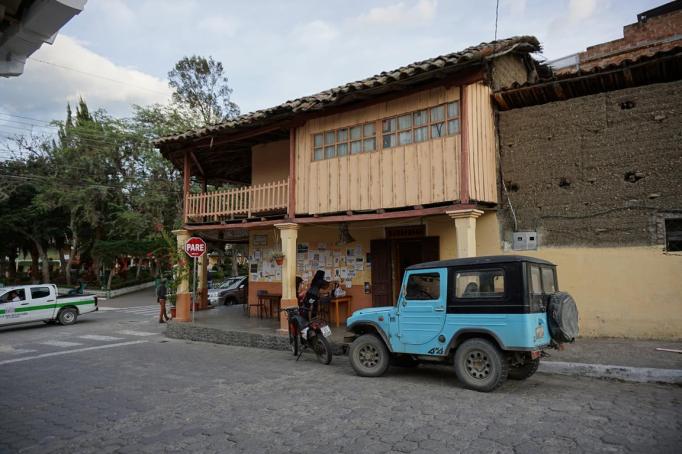
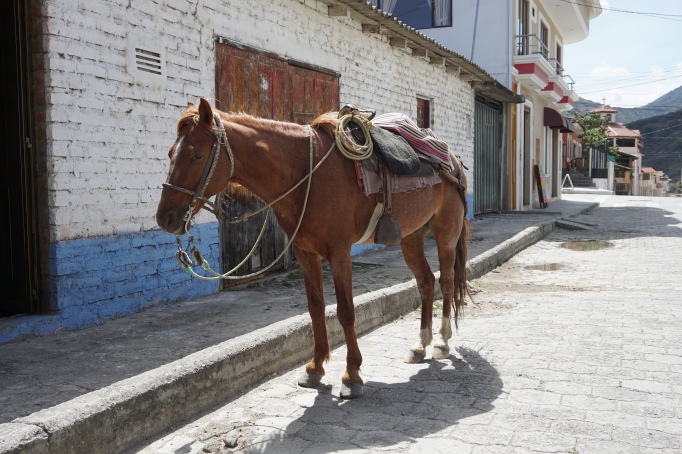 There seem to be (invisible) hitching posts actually in use, and lots of antique 4 wheelers. Ducks are steered through the dusty streets lined with small stores and living spaces.
There seem to be (invisible) hitching posts actually in use, and lots of antique 4 wheelers. Ducks are steered through the dusty streets lined with small stores and living spaces.

Okay, a confession, I was actually quite taken with the quality of the food here at very good value. I think I was hungry a lot of the time in Cuenca for good food. I know, many would argue with that assessment, but I was there for 2 months, and on my budget I never had a great meal. I had three really good meals (and one really mediocre one) all on the small town square. Fried potatoes and an omelet with salsa and good coffee. Now that is a breakfast.

So, could I live in Vilcabamba? I´m not sure. It is a bit far from urban escape, and it really is a small dusty town. But it is reasonably cheap, in Ecuador, which has great benefits for retirees, and it is close to Peru, which I am growing to love, and close to the Amazon, which I quite love. Spanglish seems to be the common language, and there are people that I can relate to. It might make it to my short list. 








